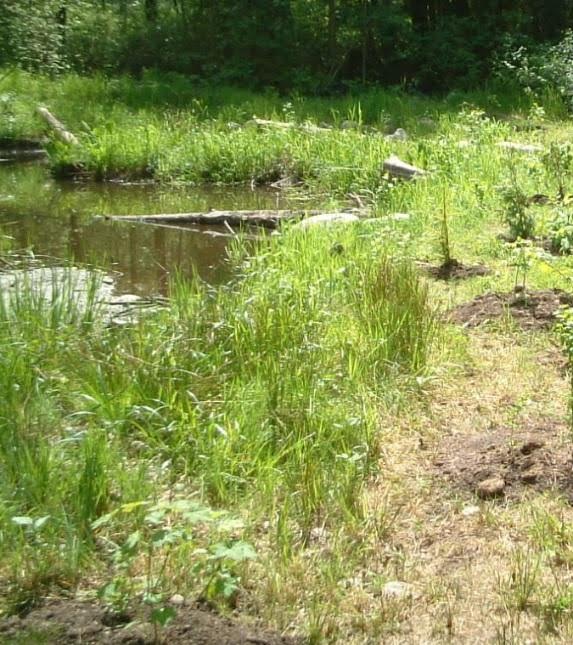Riparian Setback Assessments
Whenever required, PGL’s experts can determine the necessary development setbacks for creeks and other water features. Our services include field assessment and regulatory approvals. Setbacks are sometimes also referred to as riparian areas, streamside protection and enhancement areas, or other variations.
What Are Riparian Areas?
Riparian areas are ecologically valuable areas adjacent to watercourses/waterbodies, the functions of which include:
- Large organic debris source: Mature trees in the riparian zone are required to provide an ongoing source of large organic debris (LOD) that provides stability, cover from predators, and habitat for young fish.
- Food source: The vegetation of the riparian corridor is habitat for terrestrial insects that, in turn, are a major food source for rearing juvenile fish. Leaves and other organic matter falling from the riparian vegetation are also an important food source for aquatic insects.
- Regulation of water temperature: Summer water temperatures cannot exceed approximately 20ºC without causing stress and eventually mortality in salmon. One of the most important functions of riparian vegetation is to provide shade to keep water temperatures as cool as possible.
- Filtering of runoff: This function of leave strips is perhaps one of the most important, yet one of the most difficult to quantify and assess. The riparian vegetation forms a physical barrier to surface runoff, slowing down flow and trapping sediment and pollutants carried by the flow. This prevents input of these materials into the watercourses and hence the fish habitat.

How Can PGL Help?
In order to maintain the above-mentioned features, municipal and provincial regulations protect riparian areas through riparian setbacks.
PGL conducts riparian area setback assessments/determinations for a wide range of project sizes and complexity. Depending on the proposed activity and history of the site, riparian setback assessments may be required in advance of construction for environmental due diligence and compliance with municipal, provincial, and/or federal requirements.